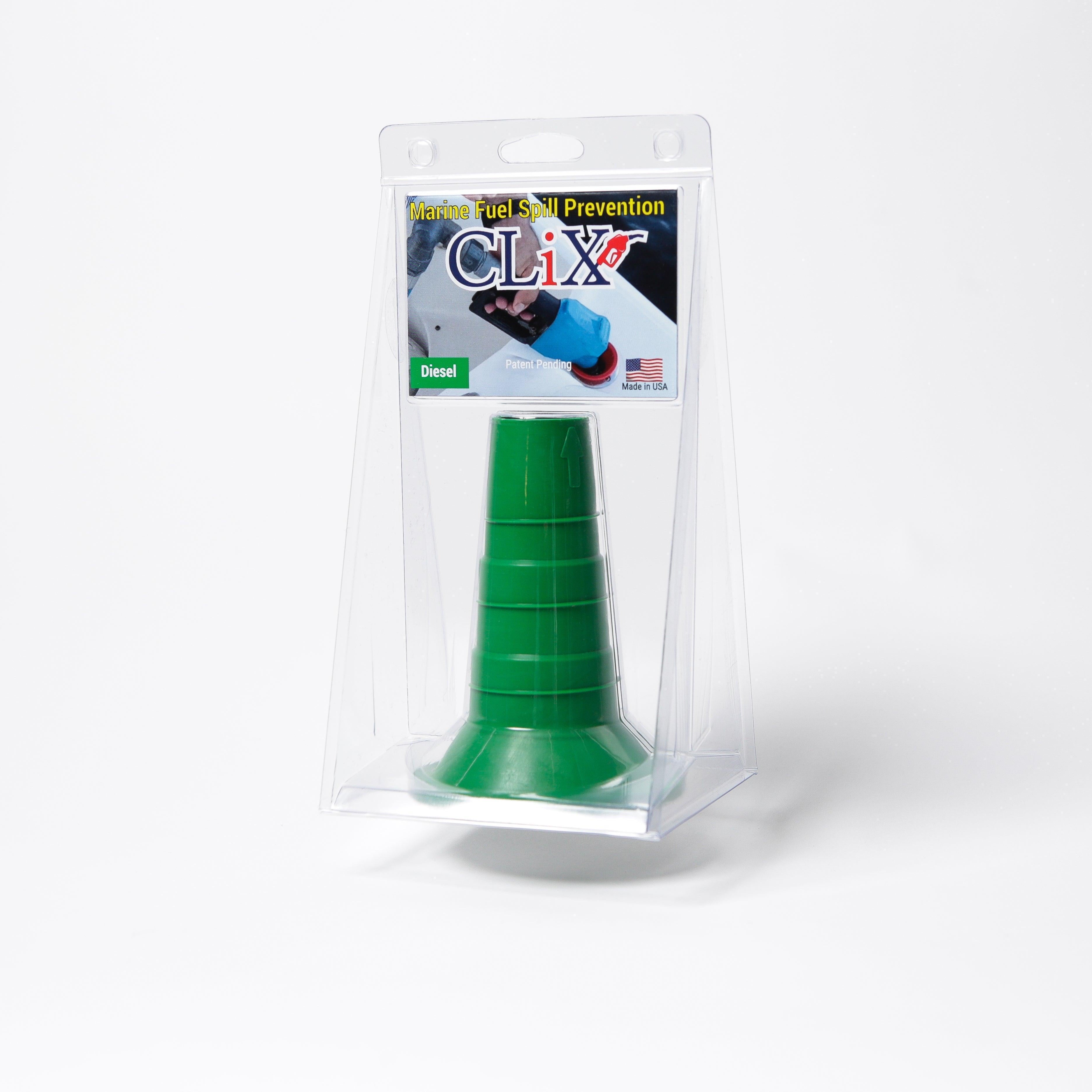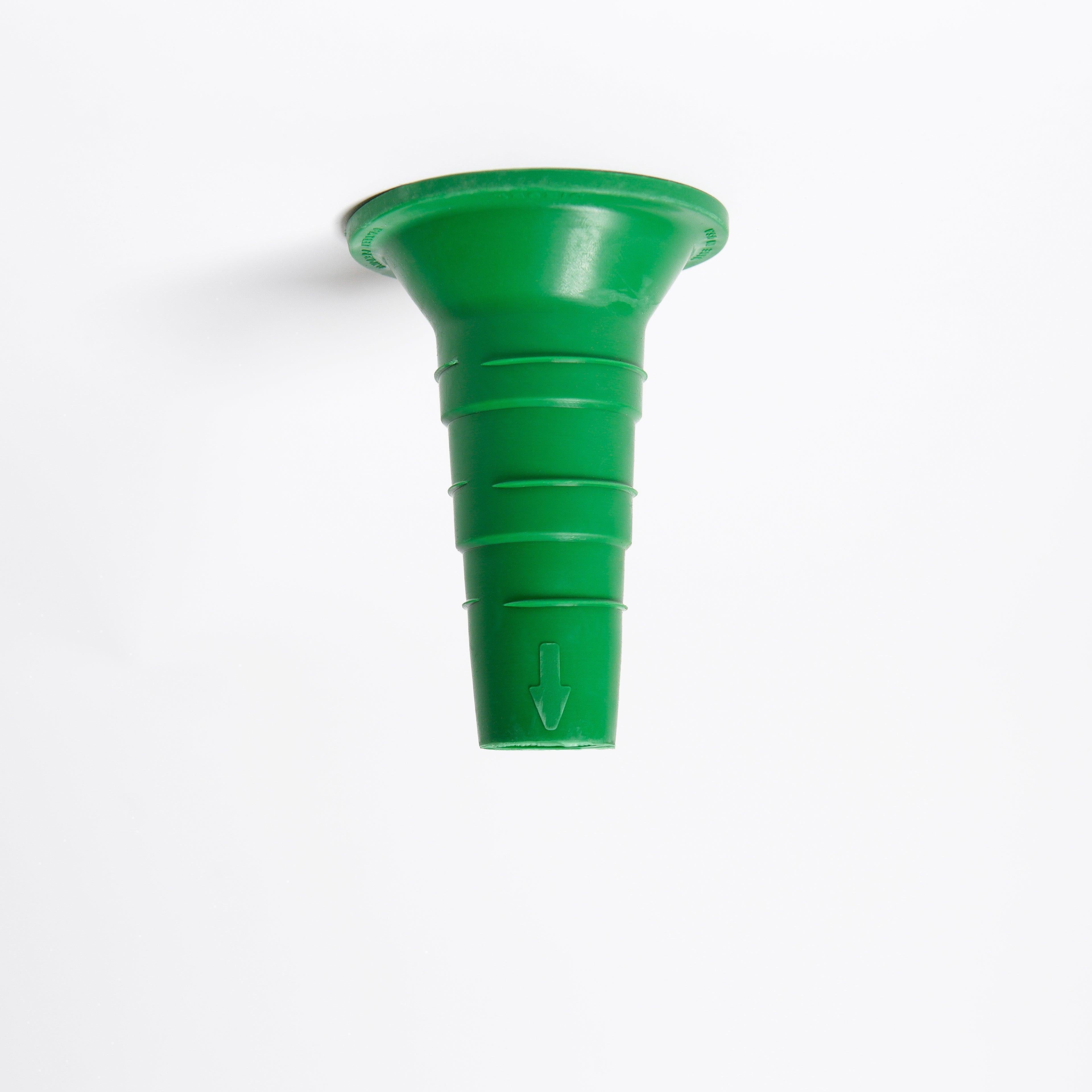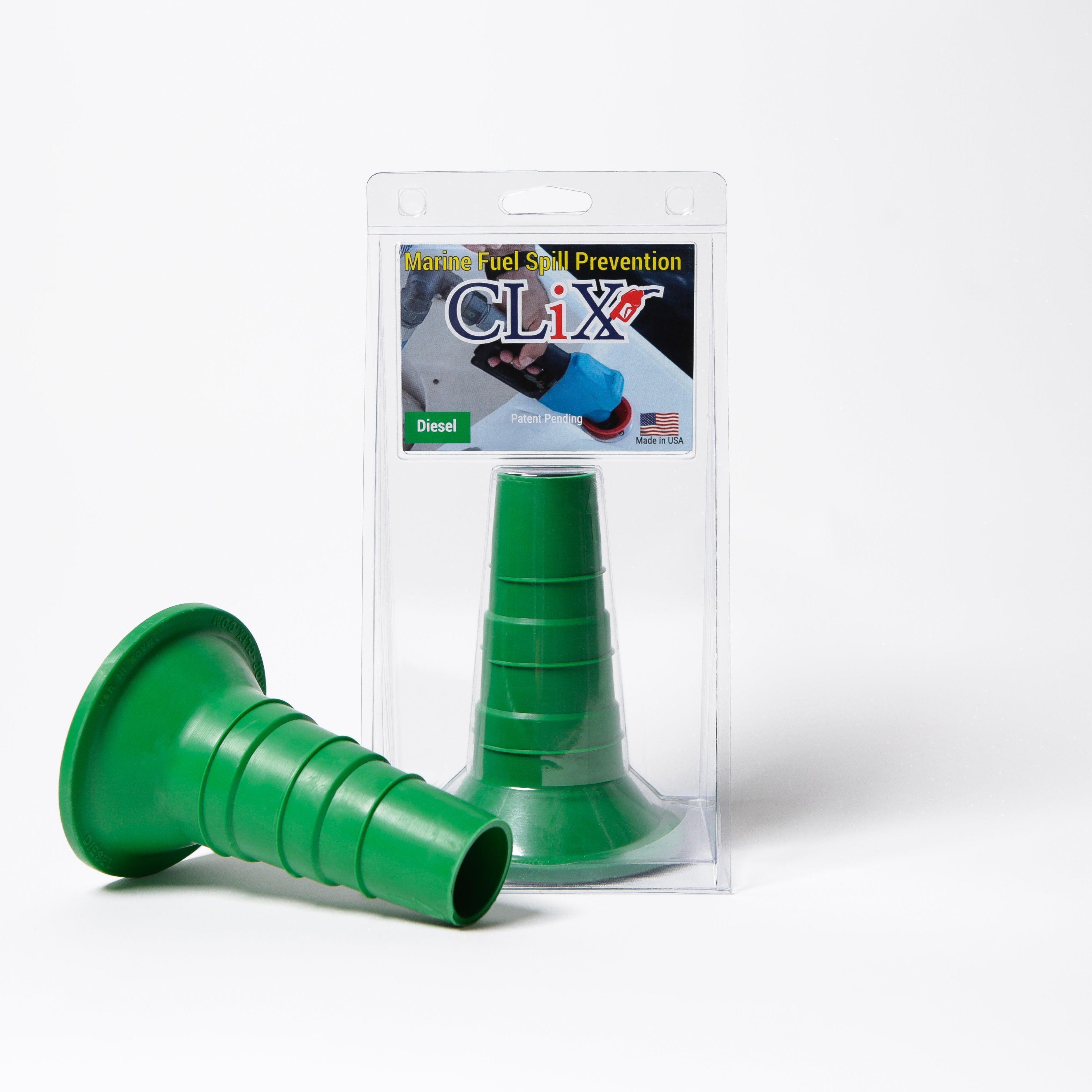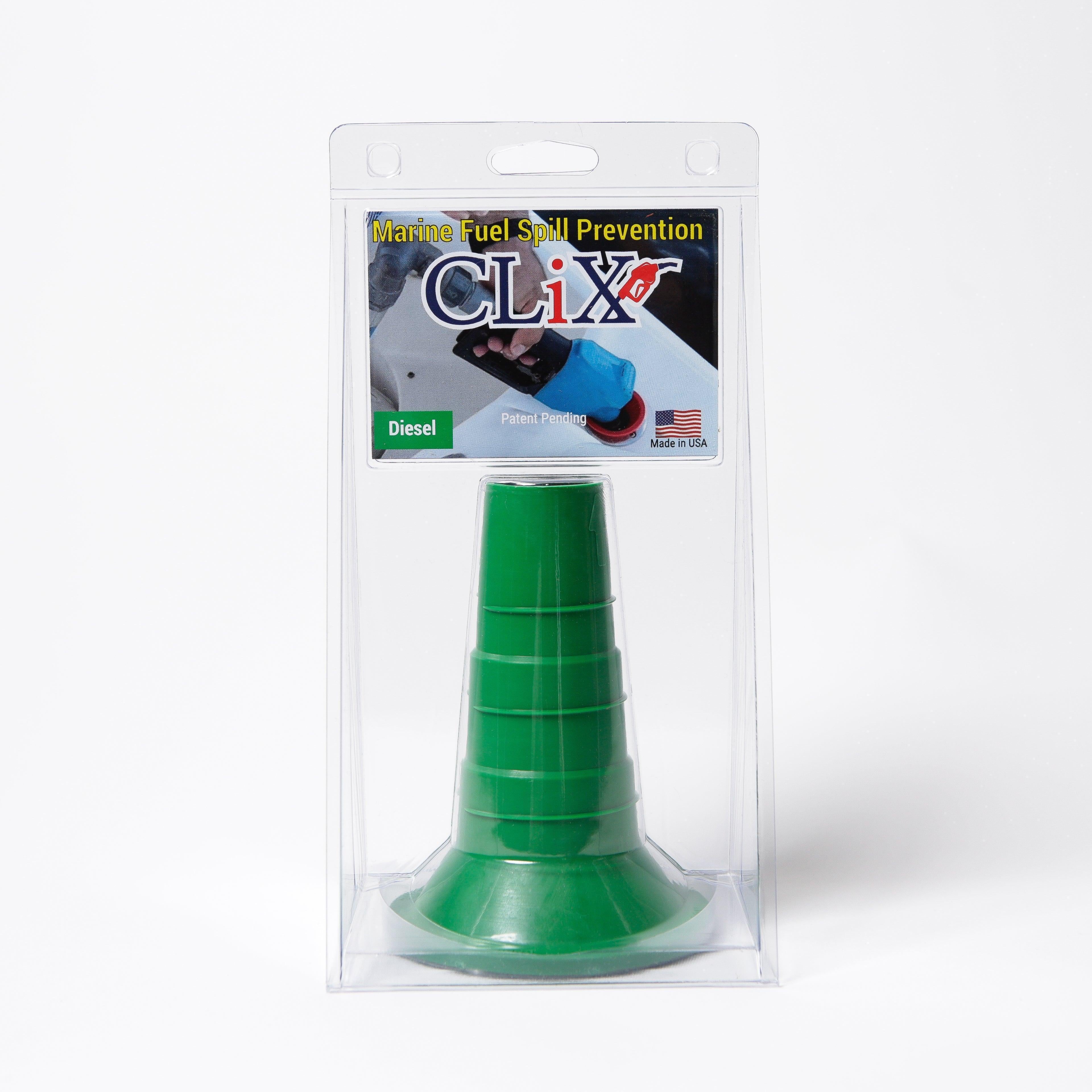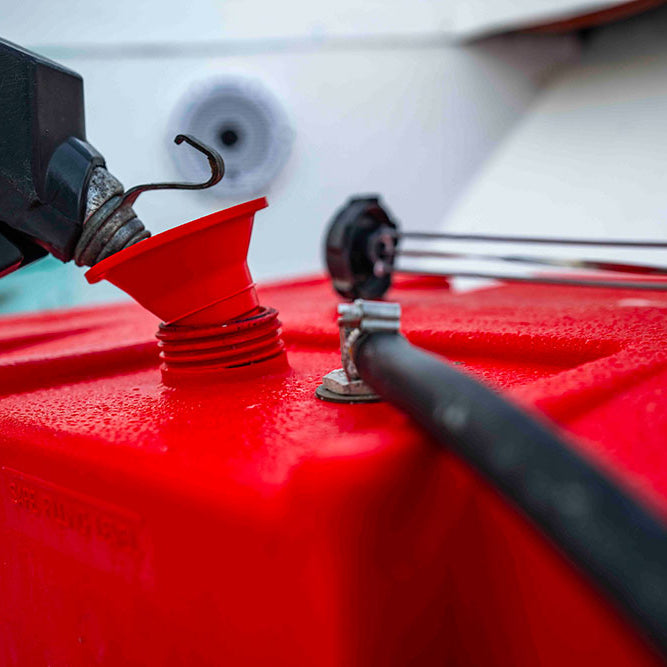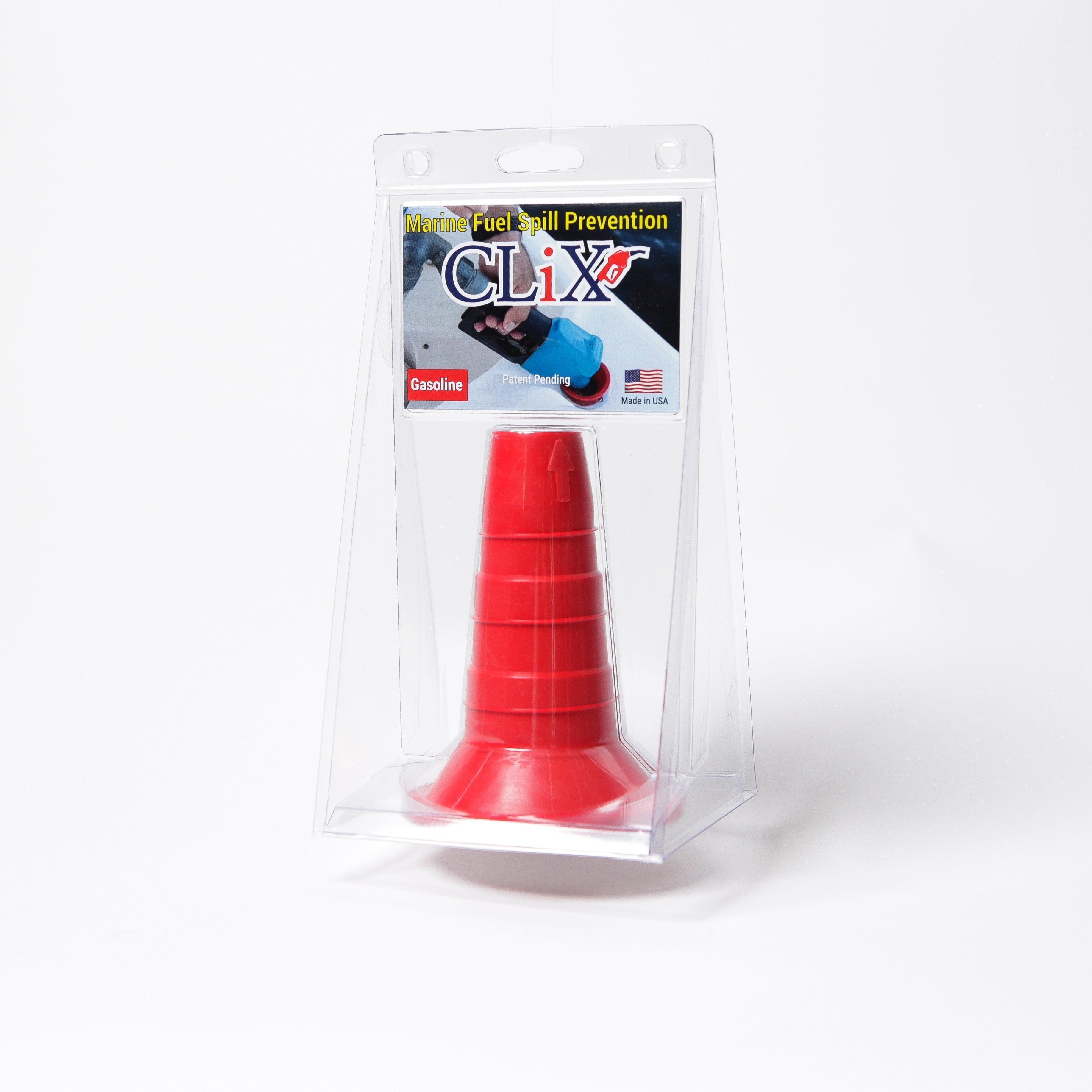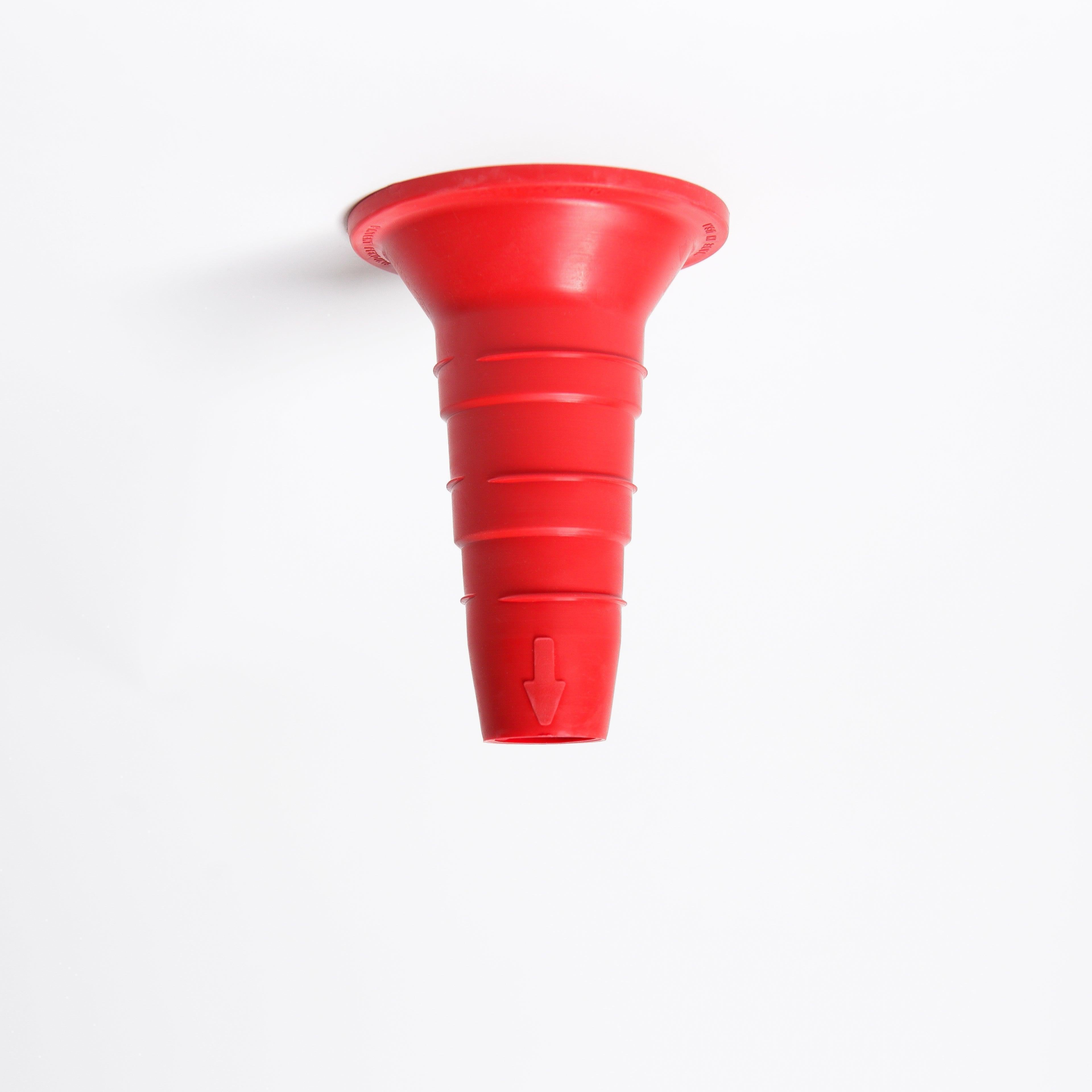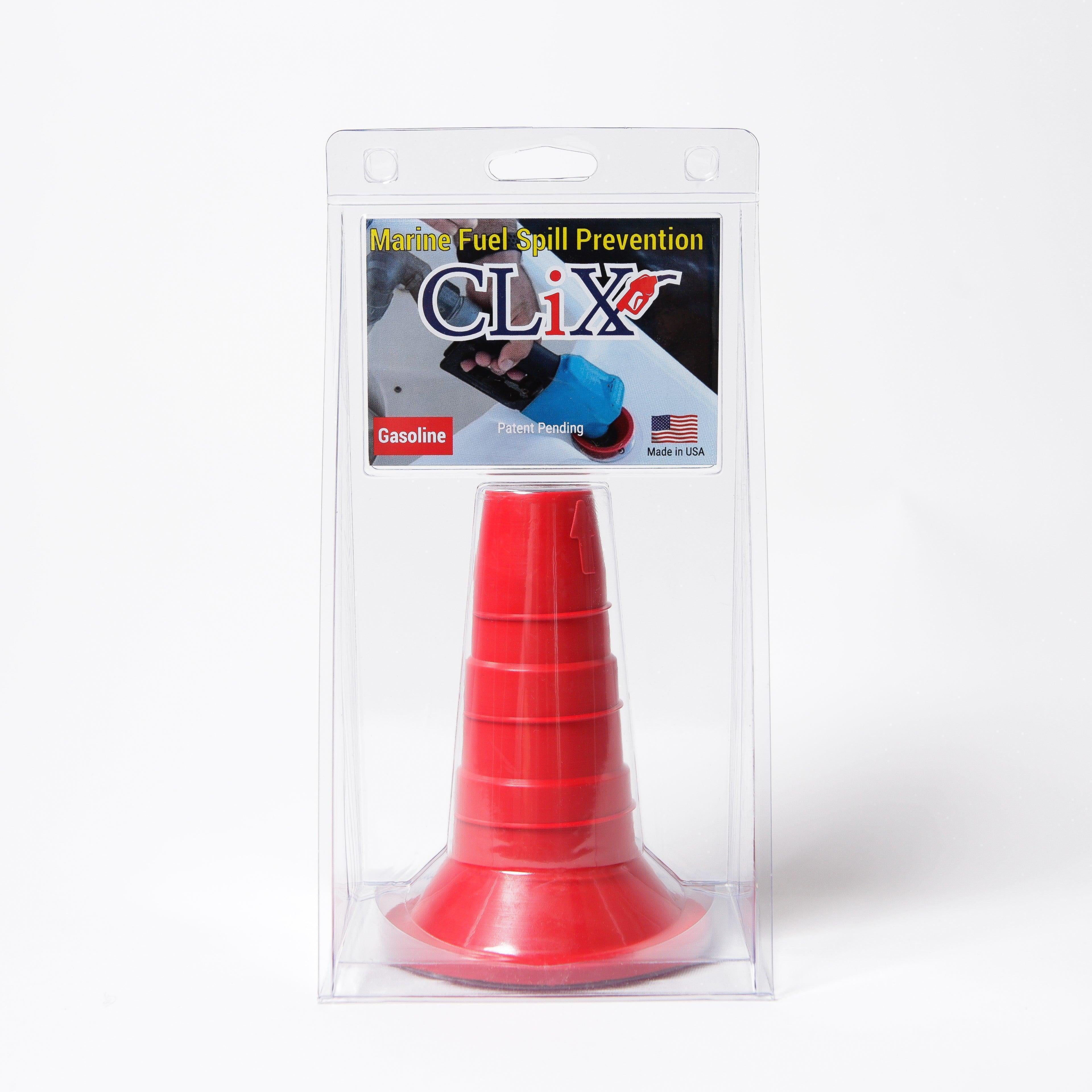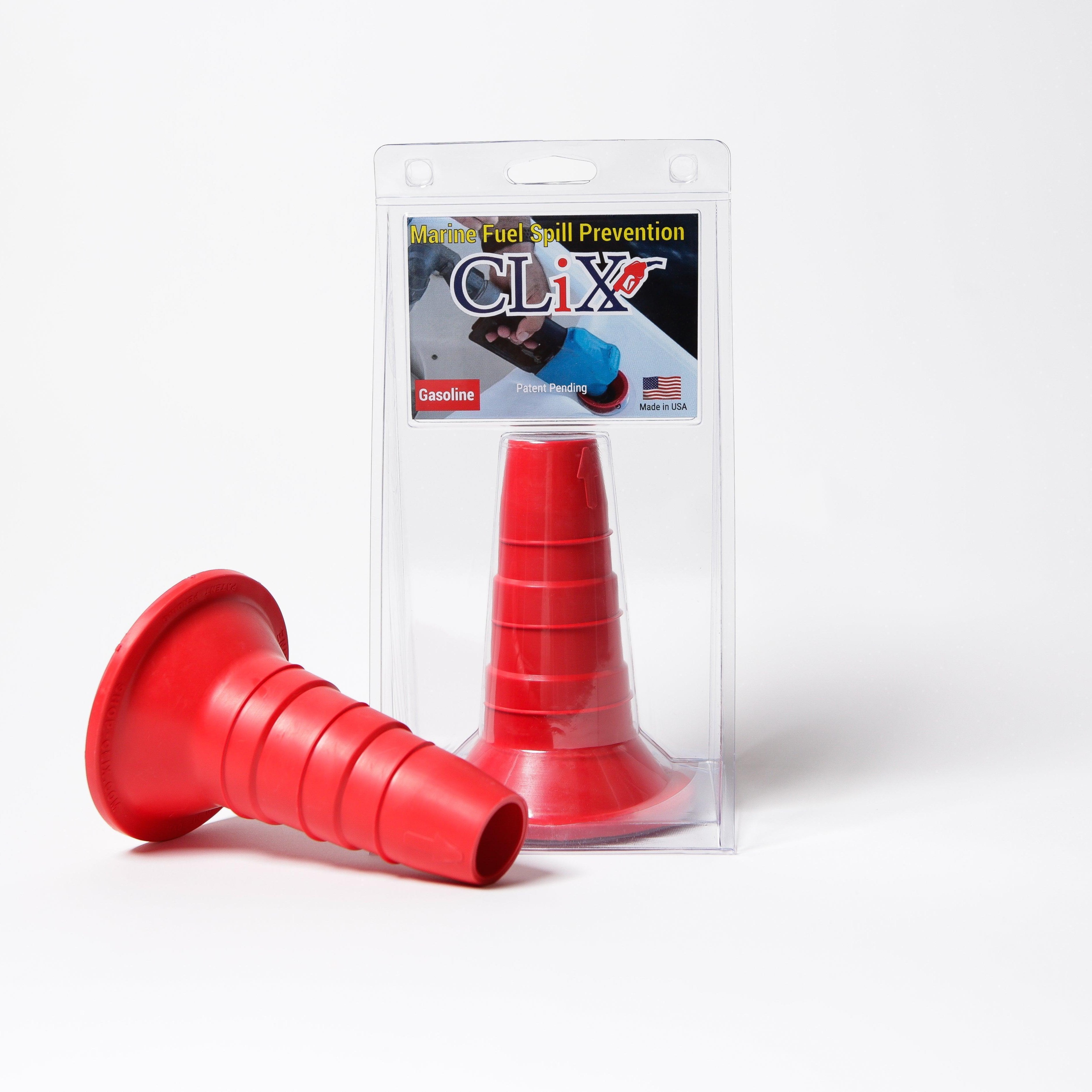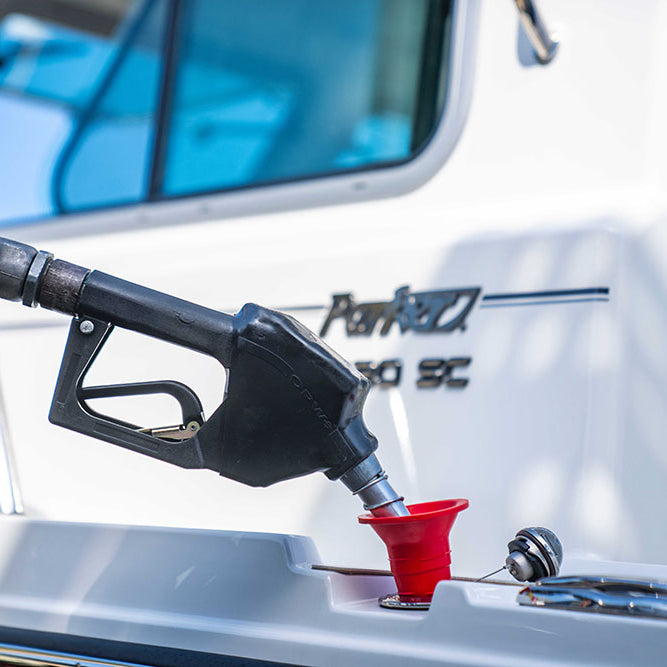Ever tried to fill up your boat's fuel tank while the dock is rocking and the waves are sloshing? You're holding a heavy, awkward fuel nozzle, trying to listen for that "gurgle" that tells you the tank is almost full. It’s a scene every boater knows well, and one wrong move can lead to a messy, expensive, and environmentally damaging spill.
This all-too-common frustration is exactly why we need a smarter, safer way to fuel our boats.
The Problem with Traditional Boat Fueling
For years, fueling a boat has been a hands-on, guess-and-check process. Unlike filling up your car where the pump clicks off automatically, refueling on the water demands your full attention. But that "gurgle" you're listening for? By the time you hear it, it's often too late to prevent a spill.
This old-school method creates a few big headaches that most boat owners have run into.
First off, it hits you in the wallet. Every drop of spilled fuel is literally money down the drain. It stains your gelcoat, damages your deck, and leads to some pretty costly cleanups over time.
Environmental and Safety Risks
Beyond the cost, fuel spills are a real threat to the water we love. Just one gallon of fuel can contaminate thousands of gallons of water, seriously harming marine life. Knowing the proper fuel spill cleanup procedures is essential, but preventing the spill in the first place is always better.
Spills don't just pollute the water; they create a dangerous environment on your boat.
Flammable fuel vapors can quickly build up around the boat during refueling, creating a serious fire hazard. Plus, getting gasoline or diesel on your skin can cause irritation and other health problems.
Finally, let's be honest—it's just a pain. Wrestling with a heavy nozzle, especially when it's windy or the water is choppy, is stressful. It turns a simple task into a major source of anxiety, and that's the last thing you want when you're trying to enjoy a day on the water.
While global events can cause a drop in fuel consumption—like the nearly 50% decline in jet fuel use in 2020—the need for safe and efficient fueling for individual boaters never goes away.
Introducing the Drop In Fuel System
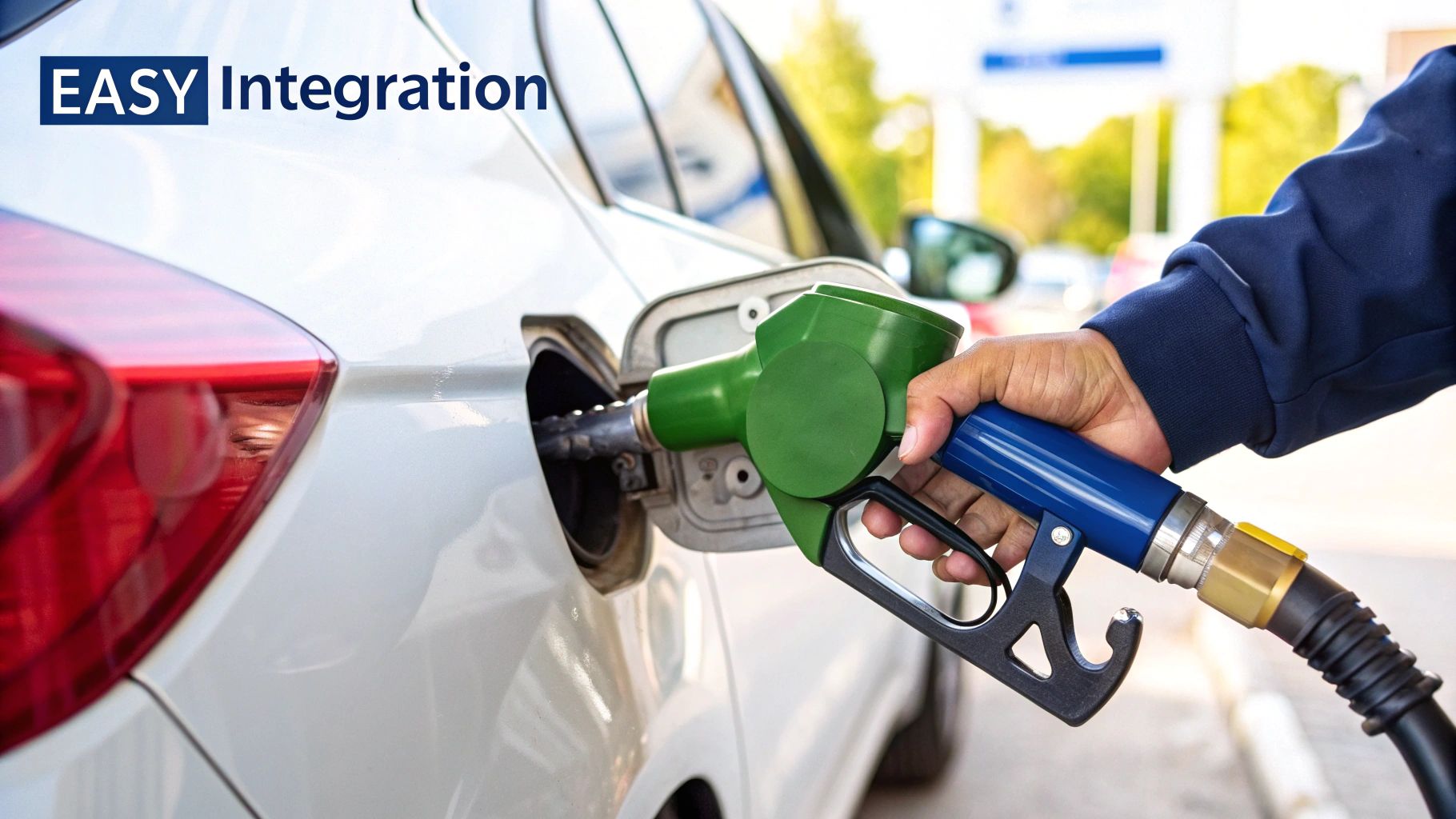
So, what exactly is a drop in fuel system? The easiest way to get your head around it is to think about filling up your car. You pop the nozzle in, squeeze the handle, and it just clicks off when you’re full. That’s it. A drop in fuel system brings that same smart, simple convenience to your boat.
It's more than just a new nozzle, though. It’s a complete, integrated setup that relies on two components working together: a special deck fitting on your boat and a matching intelligent nozzle at the fuel dock.
When you connect them, they create a perfectly sealed link. This clever design is the secret sauce that finally solves the biggest headaches of traditional boat fueling.
How It Stops Spills and Fumes
That sealed connection is the key to everything. For starters, it lets the system monitor the pressure inside your fuel tank with incredible accuracy. The second your tank is full, the nozzle automatically cuts the fuel flow. No more listening for gurgles, no more guesswork, and definitely no more overflowing fuel.
A drop in fuel system isn't just about preventing spills. It’s about creating a closed loop that keeps flammable vapors from escaping, making fueling safer for you and much cleaner for the water.
This closed-loop setup also traps fuel vapors. Instead of those fumes venting out into the air around you and the water, they’re safely contained right within the system. This drastically cuts down on fire risk and gets rid of that overpowering fuel smell that always seems to hang around the marina.
By putting it all together, a drop in fuel system delivers a clean, straightforward, and totally worry-free way to gas up. You can finally get back to what you came for—enjoying your time on the water.
How CLiX Technology Stops Fuel Spills For Good
The idea of a drop in fuel system is great in theory, but seeing it work in the real world is what really matters. That’s where CLiX Fueling Solutions comes in. They’ve taken a brilliant concept and engineered a practical, must-have tool for any boater who’s tired of the old way of fueling up.
The magic starts with the connection. The special CLiX nozzle doesn’t just loosely sit in the fuel fill. It securely locks onto the deck fitting with an audible click. This simple action creates a completely sealed, closed-loop system, trapping both fuel and hazardous vapors. It’s a huge leap forward from the messy, open-air method we’ve all been using for decades.
A Hands-Free, Worry-Free Way to Fuel
Once the nozzle is locked in, the system handles the rest. It’s smart enough to monitor the pressure inside your fuel tank as it fills. The second the tank is full, the nozzle automatically and instantly shuts off the fuel flow.
No more listening for that gurgle from the fuel vent. No more guessing. And most importantly, no more messy, dangerous, and expensive overflows.
The system's intelligent automatic shutoff delivers a truly hands-free experience. You can lock it in, step back, and trust that it will stop at precisely the right moment—every single time.
This isn’t just about convenience; it’s about preventing costly damage to your boat and avoiding harm to the environment.
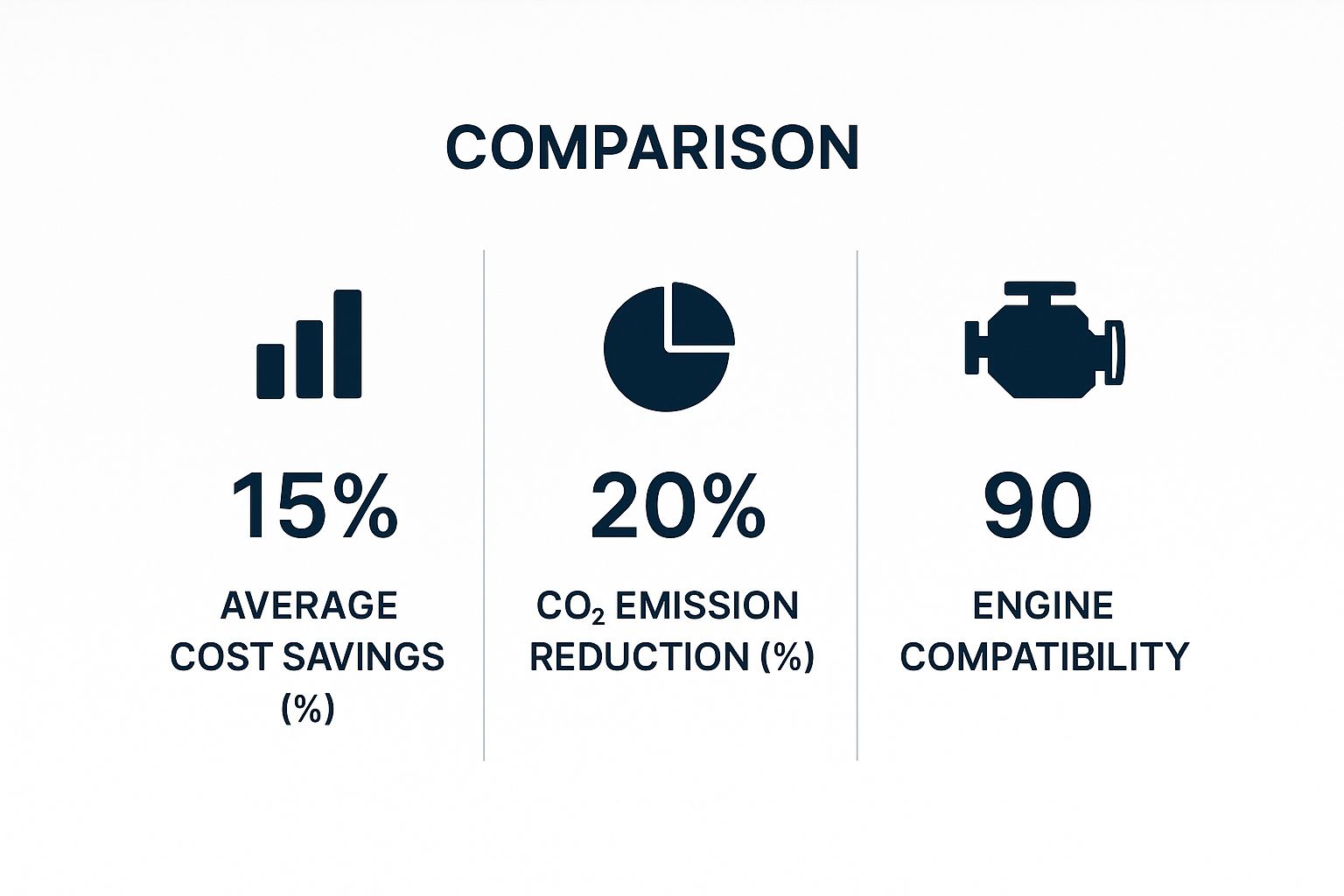
As you can see, making the switch isn't a small improvement. It brings significant cost savings, drastically cuts down on harmful emissions, and works with a wide range of different engines.
To put it into perspective, let's look at a direct comparison.
Comparing Traditional Fueling vs CLiX Drop In Fuel
| Feature | Traditional Fueling Method | CLiX Drop In Fuel System |
|---|---|---|
| Connection | Nozzle rests loosely in the fill pipe | Nozzle securely locks onto the deck fitting |
| Spill Risk | High; relies on manual shutoff and guesswork | Virtually zero; sealed connection prevents overflows |
| Vapor Release | Vapors escape into the air and onto the water | Vapors are contained within a closed-loop system |
| Shutoff | Manual; requires constant monitoring | Automatic; pressure-sensing technology stops flow |
| Convenience | Requires holding the nozzle and watching closely | Hands-free operation after connecting |
| Environmental Impact | Risk of fuel and vapor pollution | Prevents spills and captures harmful vapors |
The bottom line is clear. By creating a vapor-sealed connection and providing a foolproof automatic shutoff, the CLiX system solves the most frustrating parts of fueling a boat. It’s simply a cleaner, safer, and far less stressful way to get the job done.
The Real Payoff of Cleaner Fueling
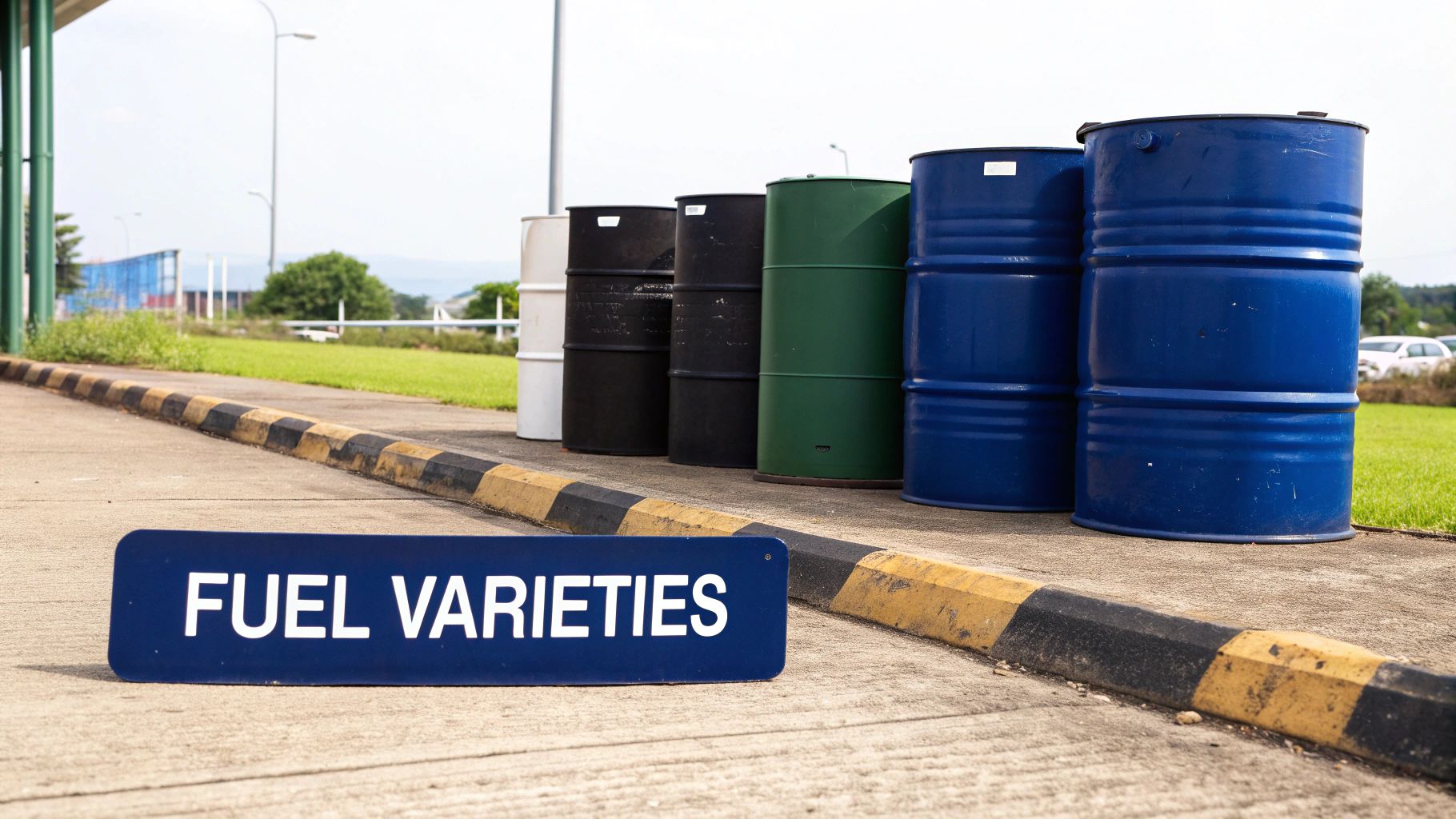
Moving to a spill-proof drop in fuel system is about so much more than just convenience. It's a genuinely smart move that pays you back in three huge ways: protecting the environment, saving you money, and keeping you safe.
Even a tiny spill makes a big, negative impact. Cleaner fueling is absolutely critical for preserving delicate marine environments, where just a few ounces of fuel can harm aquatic life. Preventing spills is simply part of being a responsible boater.
Saving Money and Protecting Your Investment
The financial argument for making the switch is just as strong. For starters, you'll stop literally pouring money into the water every time you fuel up. You also sidestep the hefty fines for fuel spills, which can hit your wallet for thousands of dollars.
On top of that, you're protecting the boat itself. Spilled fuel is notorious for causing permanent stains and damage to that expensive gelcoat finish.
Keeping your whole fuel system in good working order is a big part of being efficient, too. We put together a complete guide to boat fuel tanks to help you keep everything running smoothly.
This push for efficiency isn't just happening in the boating world. Globally, projections show that fuel consumption for light-duty vehicles could drop by 38% per kilometer by 2050 compared to 2025 levels. It just goes to show how better technology is cutting down on waste everywhere.
Switching to a drop in fuel system isn't just an upgrade for your boat; it’s an investment in safety, environmental stewardship, and long-term savings.
At the end of the day, though, nothing is more important than safety. A sealed fueling system dramatically cuts down on the flammable vapor clouds that hang around your boat—a primary cause of fires at the marina.
It also means no more getting fuel on your hands, protecting you and your family from direct contact with hazardous chemicals. That makes every trip to the fuel dock a whole lot safer and a lot less stressful.
When Drop-In Fuel Systems Matter Most
The real magic of a drop-in fuel system isn’t in the technical diagrams; it’s out on the water, where things can get messy. This isn't just a fancy gadget—it's a practical fix for the real-world headaches boaters know all too well.
Picture a solo fisherman trying to fuel up in choppy seas. Juggling a heavy, slippery gas nozzle while the boat is rocking is a recipe for disaster. With a system that locks in place, he can connect the hose and trust it to shut off on its own, without spilling a drop.
Scenarios Where It Makes a Difference
Think about a family out on their pontoon boat for the day. Traditional fueling means everyone, including the kids, is breathing in smelly, flammable gas fumes. A sealed, drop-in system contains those vapors, making the whole process safer and much more pleasant.
Or what about the owner of a brand-new yacht? The last thing they want is a streak of diesel staining their perfect gelcoat finish. An automatic, spill-proof system protects their investment by preventing overflows, keeping the boat looking pristine.
These aren't edge cases; they're common situations that turn fueling from a simple task into a stressful chore. This is where the technology truly proves its worth.
So many boaters have been there—battling rough water, worrying about their family's safety, or just trying to keep their boat clean. This kind of system offers a tangible solution that fits just about any boating lifestyle. You can learn more about how marinas are upgrading to meet these needs in our guide to modern marine fueling stations.
Each of these examples shows how a small upgrade can deliver a huge improvement, making every trip to the pump easier and safer.
Making the Switch to Smarter Fueling

It’s time to leave the old headaches of fueling your boat in the past. We’ve all been there—worrying about spills, watching expensive fuel go to waste, and dealing with hazardous fumes. Those don't have to be part of your boating life anymore.
A drop in fuel system like CLiX is the modern answer, making every trip to the fuel dock safer, cleaner, and just plain easier. This is the new standard for smart, responsible boating. You get a spill-free, automatic shutoff that protects your boat, your wallet, and the water we all love.
Making this upgrade is a big step toward a better day on the water. It also fits right in with the larger shift toward cleaner energy practices, as experts predict a major drop in fossil fuel demand by 2050. You can read more about these global energy trends on rff.org.
Ready for a Better Fueling Experience?
Getting started is straightforward. Here’s how you can make the switch to a smarter, spill-proof system for your boat:
- Check Compatibility: First, head over to the CLiX website to see how the system can be fitted to your specific boat model. It’s simpler than you might think.
- Find an Installer: Look for a certified marine technician nearby. A pro will make sure the installation is done right.
- Talk to Your Marina: Mention this cleaner technology to your local marina. When they adopt it, the whole boating community benefits from a cleaner harbor.
Got Questions About Drop In Fuel Systems?
Anytime new tech comes along, it's natural to have questions. For boaters thinking about a drop in fuel system, the concerns are usually pretty practical: "How does it install? Is it slow? What if I pull up to a marina that doesn't have it yet?"
Let's clear up a few of the most common ones.
Can I Put This System on My Boat?
Absolutely. Most modern drop in fuel systems are designed to be a straightforward retrofit for all kinds of recreational boats. It's as simple as swapping out your current deck fuel fill for the new system's fitting. That said, to make sure you get a perfect, leak-proof seal, it's always smart to have a certified marine tech do the work.
Does an Automatic Shutoff Slow Down Fueling?
Not one bit. The system is engineered to match the flow rate you're already used to with a traditional pump. The real difference isn't the speed—it's the smarts behind it. The fuel flows at full tilt until the tank is full, and then it just stops. Instantly. You get the same quick fill-up without the last-second guesswork trying to avoid a messy spill.
One of the biggest questions we hear is about marina compatibility. What happens if a fuel dock doesn't have the special nozzle? The best systems solve this by making their deck fittings dual-compatible, so you can still use a standard nozzle anytime you need to.
This dual-compatibility is key. It means you can refuel anywhere without a problem. You get the full spill-proof benefit at equipped marinas, but you’ll never be left high and dry at one that hasn't upgraded.
Ready to make fueling your boat safer and simpler? See how CLiX Fueling Solutions can give you a spill-free, worry-free experience every time you visit the pump. Explore CLiX today.

